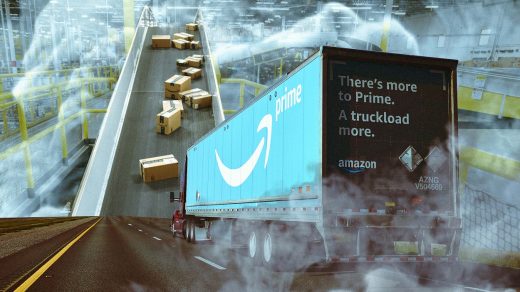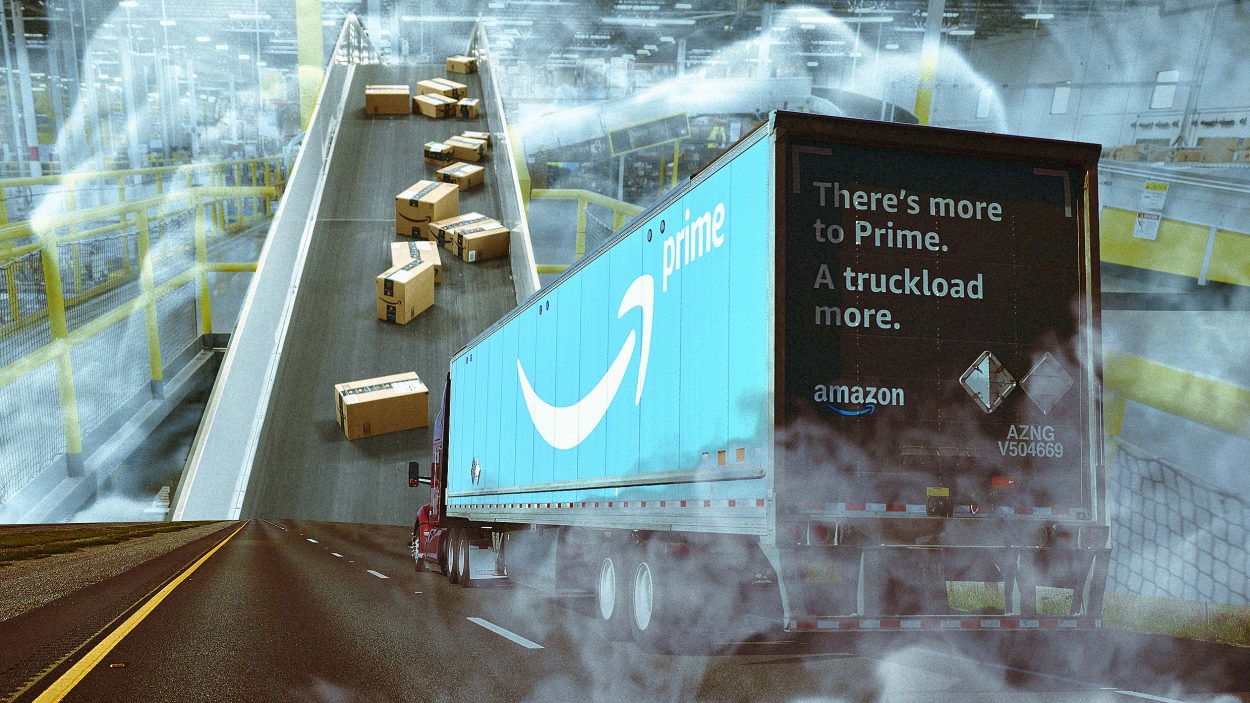Amazon quietly ditched its plan to make half of all shipments carbon neutral by 2030
When Amazon announced a program called Shipment Zero in 2019—a goal for half of all of its shipments to be carbon neutral by the end of the decade—it seemed like a milestone for the logistics industry. But the company has quietly ditched the goal.
In a statement online, Amazon said that it “no longer made sense” to have a climate goal for shipping that was separate from its other emissions. Months after launching Shipment Zero, it had launched its broader Climate Pledge, with a goal for net zero emissions across the whole company. But the Climate Pledge has a deadline of 2040, a decade later. Credible net-zero plans include interim goals.
An Amazon spokesperson told Fast Company that the change shouldn’t be taken to mean that the company wasn’t still working toward earlier internal goals. “Nothing has changed in our commitment to decarbonize our operations,” the spokesperson said. Will Evans, a reporter from the Center for Investigative Reporting who first discovered the change in policy, asked Amazon if the pledge had been eliminated because the company was going to miss the goal, and was told that wasn’t the case. Still, if the company was on track to hit the target, it’s not clear why they wouldn’t want to celebrate that publicly.
“I can’t speak to their reasoning, but the fact that this commitment was quietly deleted from their website and had to be unearthed by a reporter who had previously reported on Amazon underestimating their carbon footprint, is concerning,” says Eric Leveridge, who leads a zero-emissions shipping campaign at the nonprofit Pacific Environment.
Amazon says it’s still committed to rolling out 100,000 electric delivery vehicles by 2030, and thousands are already in use. That includes both city delivery vans from Rivian and big electric semis from Volvo that can carry cargo between warehouses. (In Germany and the U.K., where some of the 40-ton Volvo trucks were added last year, Amazon also installed fast chargers that can charge the vehicles in less than two hours.) The company has also invested in electric planes, ultra-low-carbon jet fuel, and other zero-emissions tech.
The number of clean-transportation options for companies is growing, including in cargo shipping. There are “more green options in the pipeline than ever before,” Leveridge says. “And Amazon has leverage as one of the world’s largest retailers to transition to clean shipping. . . . If Amazon was able to charter its own cargo ships during COVID-19 to mitigate supply chain delays, they should be able to purchase, procure, and/or otherwise charter zero-emission transportation to mitigate the climate crisis. In the most decisive decade for climate action, Amazon should be doing everything in its power to eliminate its pollution and achieve zero-emission goods movement.”
Amazon employees have argued that the company has a responsibility to lead on climate tech, both because of its enormous footprint—with an estimated 7.7 billion packages delivered in 2021—and its embrace of technology in general. Amazon Employees for Climate Justice, an employee group that is separately planning a walkout to protest what it calls a “broken Climate Pledge,” said in a statement that the company had previously talked about Shipment Zero as a key milestone on the path to its later goals.
“When someone abandons a key milestone of a goal without at least replacing it with another significant milestone, that tells us Amazon is not serious about meeting its commitment,” the group said in an email. “How are we supposed to conclude anything other than that senior leadership has yet again decided to deprioritize getting Amazon’s business [to] zero emissions? There was no transparency about this decision, only misleading, generic statements. . . . Why all the cloak and dagger if there’s truly nothing to see? We have to have a different Amazon. One that doesn’t just slowly swap gas vans for their EV versions, but one that truly centers business decisions around sustainability.”
Even if Amazon does end up meeting the original Shipment Zero goal, the change in external messaging is an illustration of how quickly corporate sustainability goals can shift. When it first announced the goal, the company acknowledged how difficult it would be to hit. “It won’t be easy to achieve this goal,” Amazon wrote at the time in a now-deleted blog post, “but it’s worth being focused and stubborn on this vision and we’re committed to seeing it through.”
(19)



